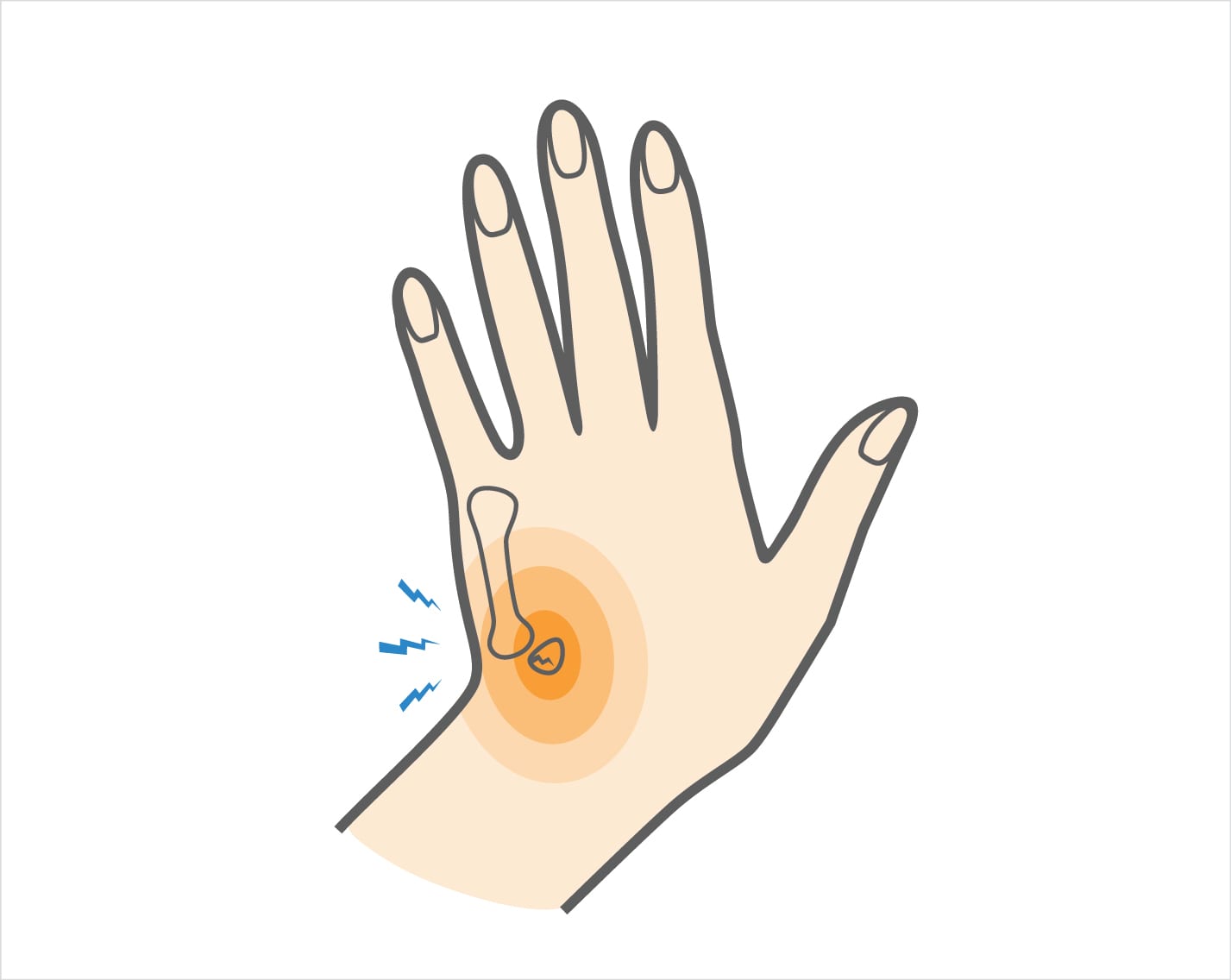The hamate bone is one of the eight small carpal bones in the wrist that connect the forearm to the hand. The hamate is a wedge-shaped bone located on the outside of the wrist on the small-finger side. It has a projection on the side of the bone called “the hook of hamate.” This hook is susceptible to a fracture from a direct blow to the wrist or a stress fracture from overuse of the wrist. While this injury is uncommon, it can be painful and difficult to treat.
Hook of Hamate Fractures Causes, Symptoms & Treatment
The hamate bone is one of the eight small carpal bones in the wrist that connect the forearm to the hand. The hamate is a wedge-shaped bone located on the outside of the wrist on the small-finger side. It has a projection on the side of the bone called “the hook of hamate.” This hook is susceptible to a fracture from a direct blow to the wrist or a stress fracture from overuse of the wrist.
Overview
Overview

What causes Hook of Hamate Fractures?
Hamate fractures usually happen to athletes who grip a bat or club. For instance, a fracture can occur to a baseball player when they check their swing. Sometimes, the repetitive stresses placed on the wrist from gripping a bat or club over time can cause this injury. A fall or some other direct trauma to the wrist can also cause the fracture.
Hook of hamate fractures are most common in these sports:
• Baseball
• Racket Sports (e.g. tennis, racket ball, squash)
• Golf
• Hockey
Symptoms
Pain on the ulnar (pinky finger) side of the wrist is the most common symptom associated with hook of hamate fractures. Pain is usually persistent and severe when you press directly on the ulnar side of the wrist. Other common symptoms of hook of hamate fractures include:
• Weakness of grip
• Swelling
• Bruising
When to see a doctor
If you have symptoms of a hook of hamate fracture, you should make an appointment to see your doctor. To make a diagnosis, your doctor will ask about your injury and the sports you play and conduct a physical examination to look for signs of injury. If a fracture is suspected, your doctor may apply pressure to areas of your wrist, and ask you to move it in various positions. Your doctor may order x-rays which should include a special “carpal tunnel” view that best visualizes the hook of hamate, as standard x-rays may not show this fracture. Hook of hamate fractures are hard to capture through imaging, even with this special view. CT scans and magnetic resonance imaging (MRI) tests may be ordered to look at the bones and soft tissues in your wrist. These tests help confirm the diagnosis and rule out other causes of your pain.
Non-operative treatment
If you have a hook of hamate fracture due to a recent injury, then your doctor may consider non-surgical treatment. Wearing a splint or cast for six to eight weeks has been shown to successfully heal most recent fractures. Conservative treatment typically involves:
• Wearing a splint or cast
• Rest from activity that places stress on the wrist
• Ice
• Nonsteroidal anti-inflammatory drugs (NSAIDs), such as ibuprofen and naproxen, for pain relief
Try these exercises to help address your condition:
Below is a PDF of the exercise program.
Surgical Treatment
Most patients with hook of hamate fractures see their doctor after months and months of symptoms, making successful treatment through non-surgical means difficult. In chronic cases, surgery to remove the fractured hook part of the bone has been shown to produce successful results, and is typically recommended. If you have a hook of hamate fracture that may require surgery, it is important to discuss with your surgeon the risks and benefits of the procedure, as well as the potential outcomes of not operating upon the fracture.
Recovery
After surgery, the wrist will typically be in a cast or splint from one to four weeks after the operation. Most athletes can expect a return to play in approximately six weeks. Physical therapy or hand therapy will help maximize motion in your wrist and get you ready for resuming your normal activities.

